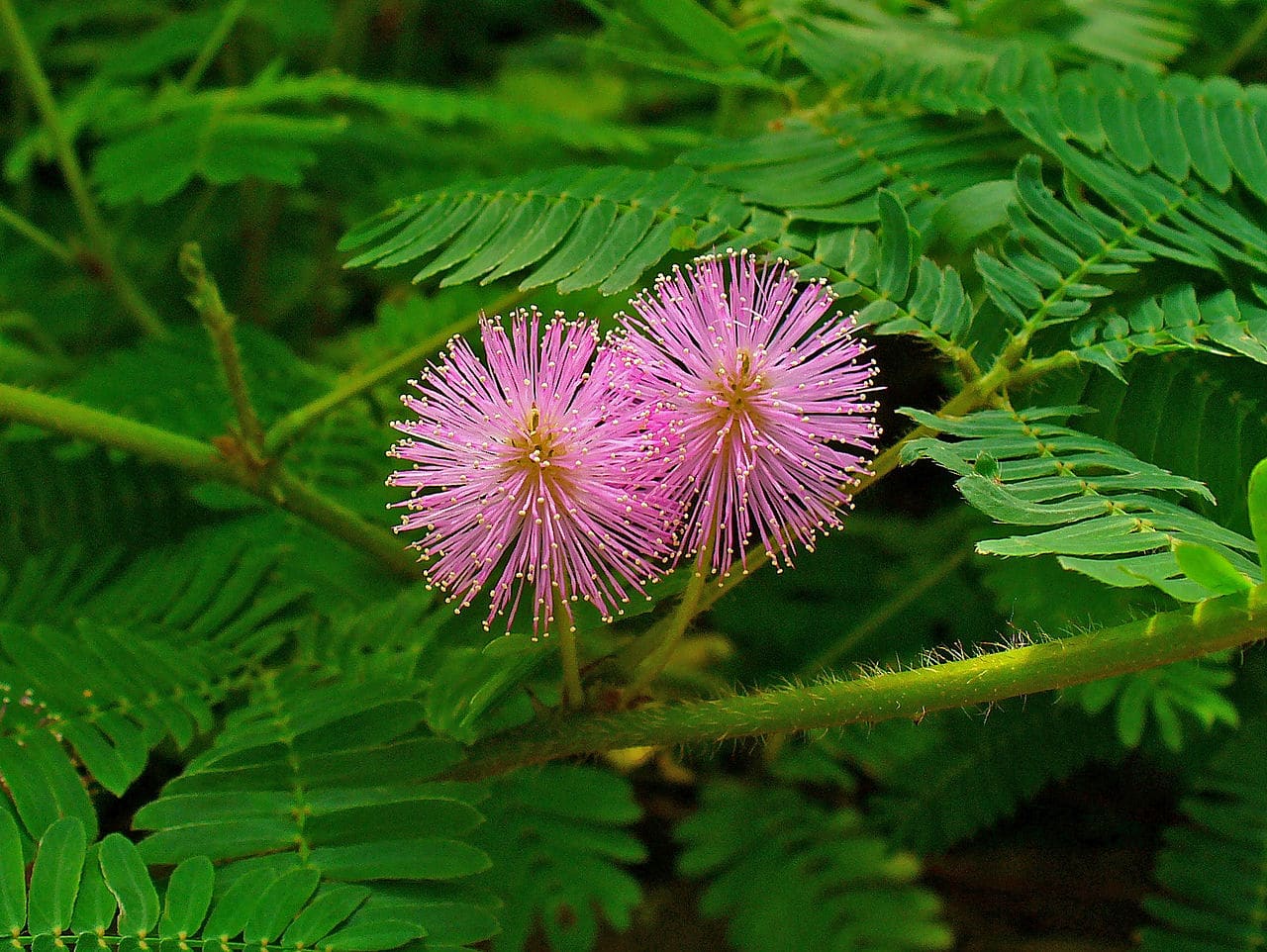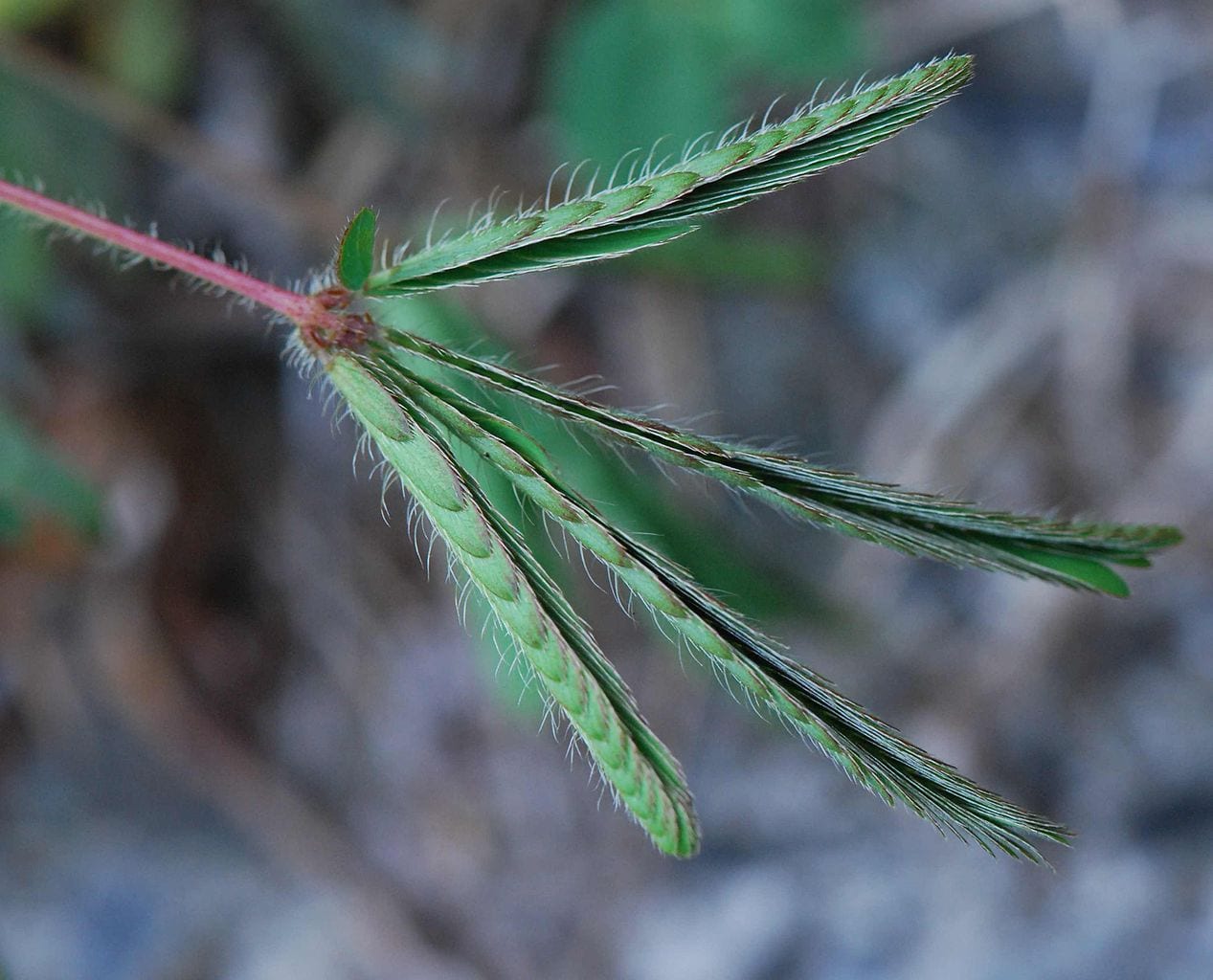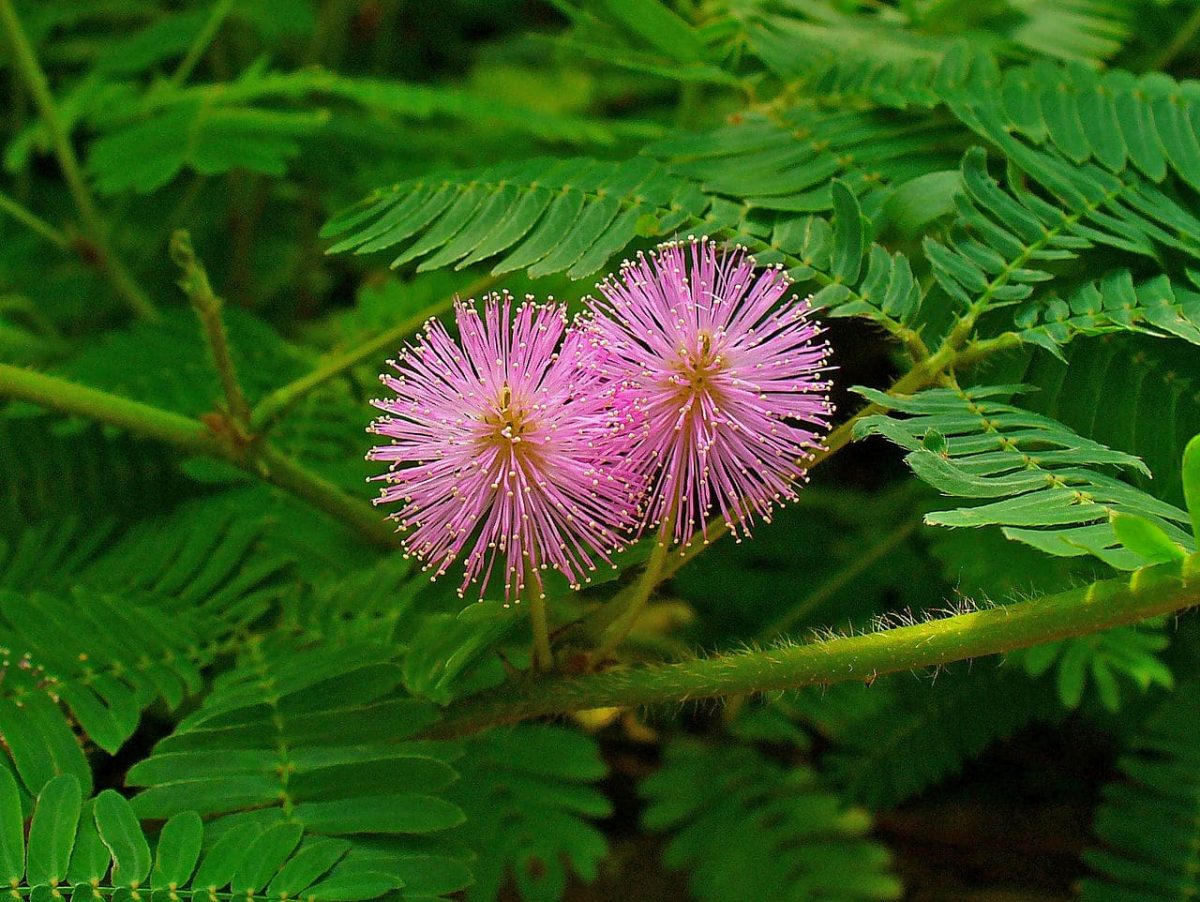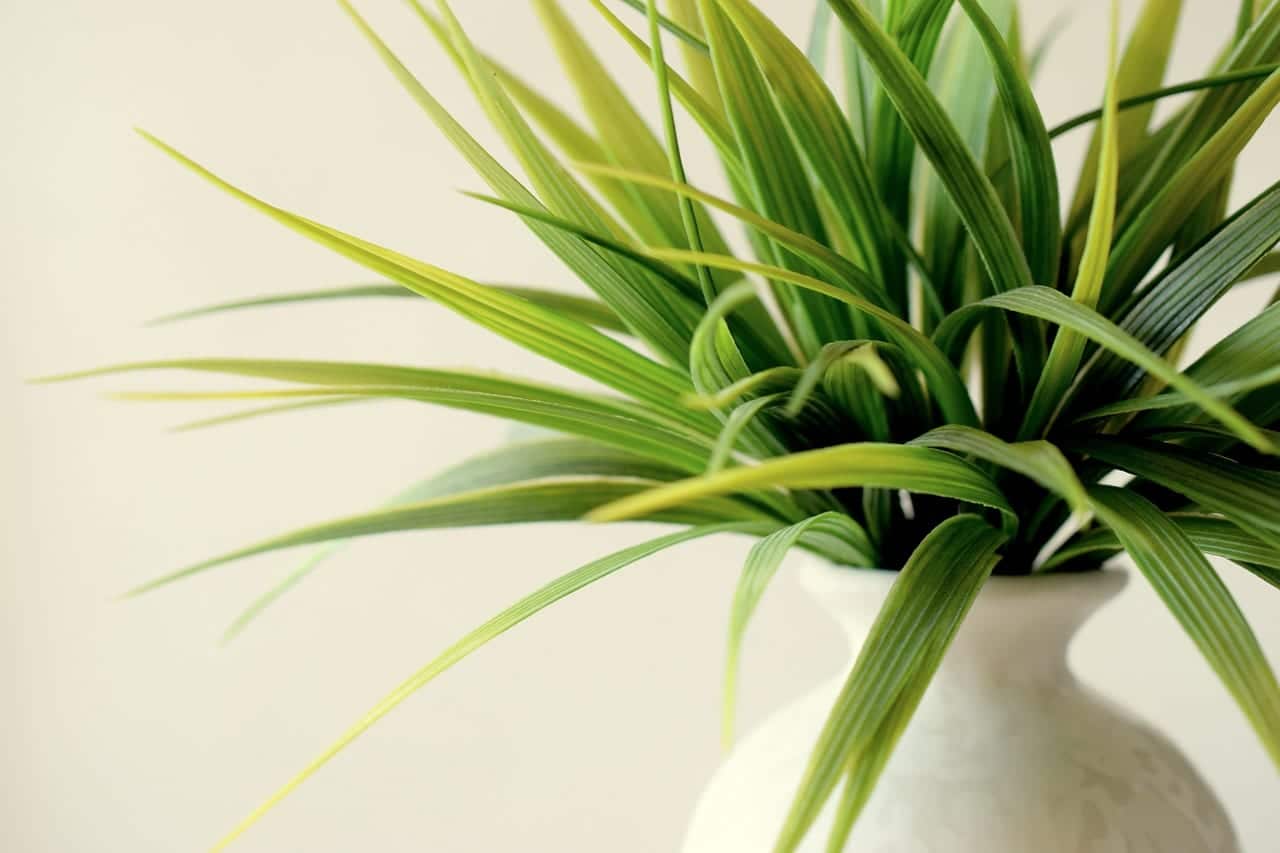
Image - Wikimedia / H. Zell
The Plant Kingdom is made up of many species, but if there is one that attracts special attention, it is the Mimosa pudica. This name probably doesn't tell you anything, but what if it told you that its leaves close at the slightest touch? Surely you already know which plant I'm talking about, right?
This is an herb that is known as mimosa sensitive, dormant, nometoques, or shame, and it can be grown in temperate and warm regions of the world. But why is it so eye-catching? Let us know what are the curiosities of the mimosa plant.
Why is it so curious?

La sensitive mimosa plant it has developed a very unique defense mechanism: folding its leaves as soon as insects land on it. But the thing does not stop there, but the stem allows itself to be overcome by the weight of the insects, so that they lose interest in the plant. But, as it does?
These movements are known nictinastia, and are a good example of the plant circadian rhythm. The change in the angle of the leaf or foliole is caused by turgor changes in the cells of the pulvínulo. The pulvínulo is a foliar or foliolar base that has a bearing shape which, due to variations in the turgor of its cells, can cause movements in the leaves. If this turgor occurs in the flexor cells, the leaflets open; On the other hand, if it takes place in the extensors, they are closed.

Another curious fact about this plant is that at night he seems to sleep, because its leaves are folded. But, as we can see in this article, plant beings do not sleep. This time, they do not do it to protect themselves from insects, but because of the lack of light.
The mimosa plant is a very interesting little plant to have at home. If you want to know everything about it, it is time to move on to its characteristics and its care:
Origin and characteristics
It is a perennial herbaceous plant but grown as an annual in cool-temperate climates native to the rainforest of America and tropical Africa. Its scientific name is Mimosa pudica, although popularly it is known more as sensitive mimosa, poppy (not to be confused with the poppy of the species Papaver somniferum), don't touch, or embarrassing.
It can grow up to a meter in height, often in areas exposed to the sun king. Its leaves are compound, formed by two pairs of pinnae that contain 15 to 25 very small leaflets, about 1 centimeter long, and green to dark green in color. The flowers are also small, about 2 centimeters in diameter, and pink in color.. The fruit is a legume that contains several rounded seeds.
It has a short life expectancy, around 5 years. But that should not be a problem, since it is a plant that reproduces very well by seeds, even blooming a few months later.

What care does sensitive mimosa require?

Having a plant and keeping it healthy is not very complicated, and it will be less if you take into account some tips:
Location
Place it outside, in an area where the sun shines directly, at least 4 hours a day.
Earth
- Flower pot: you can fill it with universal substrate for plants sold in any nursery and garden store.
- Garden: it is not demanding, but prefers limestone soils with good drainage.
Irrigation
It will depend on the location and the season of the year in which we are; However, to have more or less an idea of how often to water, you have to know that the ideal is that the substrate or soil is somewhat humid.
Overwatering rots its roots, so it's important to let the soil dry out a bit before watering again. So, in dry and hot climates the frequency is usually about 3-4 irrigations a week during the summer, and 1-2 a week the rest of the year.
Every time you water, pour water until you see it coming out of the drainage holes in the pot, or if it's in the ground, add 2-3 liters each time.
Subscriber

From early spring to late summer It is advisable to pay it, for example, with guano, which is an organic product and very quickly effective, following the instructions specified on the package.
Mimosa multiplication
It multiplies easily by seeds, which are sown in spring in seedbeds with universal substrate. Put a maximum of 3 in each, and bury them just a little bit, enough so that they are not too exposed.
Keeping the substrate moist and the seedbed placed outside, in semi-shade, they will germinate in about 10 days.
Planting or transplanting time
En spring. If you have obtained it from seed, you can plant it in the garden when it has reached a height of about 10 centimeters.
If you grow it in a pot, transplant it to a larger one as soon as you acquire it, and / or when you see that the roots come out through the drainage holes, or when you see that it has occupied the entire pot.

Rusticity
It's a plant very sensitive to cold, and does not resist frost. For it to behave as a perennial, the temperature should not drop below 10ºC.
Where to buy?
Mimosa is a plant that is sold in nurseries especially during spring and summer, but you can get seeds from here and get several specimens for almost what it would cost you only one in those centers:
No products found.